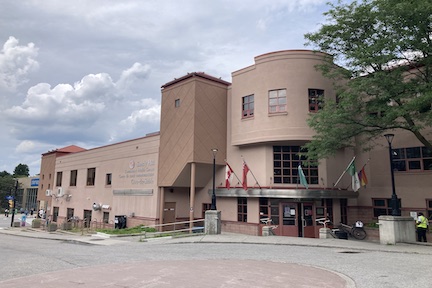The reopening of the Sandy Hill Community Health Centre’s safe injection site on Monday got off to a relatively quiet start after being closed since February.
While opening day saw the space at about 50 per cent of capacity, staff say they expect to see an increase in the next few weeks.
The site closed because workers in the centre were being exposed to harmful fentanyl fumes, created by clients smoking and cooking the opioid in the facility.
As a result staff developed symptoms such as nausea, vomiting, headache and a general malaise. The effects developed quickly, over the span of a few weeks, said Derrick St John, the interim director of consumption and treatment services (CTS) at the health centre. He said the clinic now has undergone an ventilation system upgrade. The clinic invested $80,000 in a new system to ensure the health and safety of staff and clients.
“I think the culprit was a really localized batch of fentanyl. Our colleagues in British Columbia say that one of the fentanyl analogues, namely parafluorofentanyl, has a very distinct odour when it is combusted. So it’s possible that there was another adulterant in the drug supply that made that fentanyl especially smelly or noxious.”
An environmental assessment revealed that the former ventilation system wasn’t able to keep up with demand. The old system was also not strong enough to keep up with the demand that the clinic was seeing.
“We are about 10 times busier than we first were four years ago when we opened. So given the nature of the amount of visits that we have in a year, the frequency at which people use drugs, and the potency of the drugs, when you combine all those things, an HVAC system that was good four years ago … it just wasn’t enough,” St John said.
After closing, the clinic collected samples of street fentanyl and sent them for various testing to see the range of the problem.
“We didn’t really find, per se, any extra adulterants fentanyl that would cause that odour, it did test positive for that one fentanyl analogue (parafluorofentanyl), it was also around the time that we had discovered the tranquilizers (xylazine) in the drug supply.”
St John attributes the increase in use and potency to several factors.
He said many people who use fentanyl have switched to inhalation, which is what causes most fentanyl overdose-related deaths in Ontario.
“We encourage people to never use alone. If they’re injecting, they’re allowed to use inside the room,” St John said.
Clients at the CTS are registered in a provincial database and are provided with information on how to use drugs safely. Staff also monitors them and can connect them with other resources, such as social services, financial support, or medical treatment.
St John said many clients are marginalized and are disproportionately affected by the drug crisis. The site sees about 200 to 300 users per year.
In case of overdose, staff can provide naloxone and oxygen and help those affected to get to the hospital, which helps relieve pressure on emergency medical services.
“Every year we reverse about 800 overdoses.”
They also offer harm reduction gear, which can help prevent such things as heart infections caused by intravenous drug use.
There are several safe injection sites in Ottawa, including the Ottawa Public Health site at Clarence Street, “The Trailer,” located at the Shepherds of Good Hope’s shelter and the Somerset West Community Health Centre.
These three other sites were busier while the Sandy Hill location was closed.
St John said there are mixed opinions among neighbourhood residents regarding the Sandy Hill site. While the community sees the merit of the site, they are also aware of the increased drug use in the community.
“We often are the lightning rod of any kind of social disturbance in the neighbourhood.”
Oftentimes, people who consume drugs by inhalation do so near the building, because of nearby access to naloxone and emergency services.
“They know it’s a safe space, where, if they do overdose we will respond. But we definitely don’t encourage it, it’s just unfortunately a reality,” said St. John.
He highlighted the importance of safe injection sites for building a sense of community for those who need it the most.
“Everyone is someone’s brother, sister, father, uncle. It brings it down to a human level where we really see the person as a person. For me, that was one of the things that drew me to this kind of work.”
“These are people that face a lot of barriers, and I want to be part of a team that helps them in their quest for health.”




